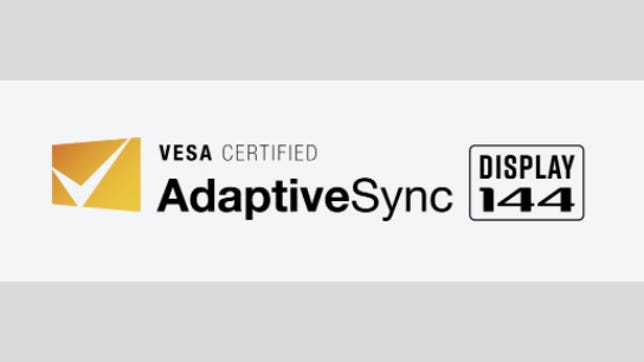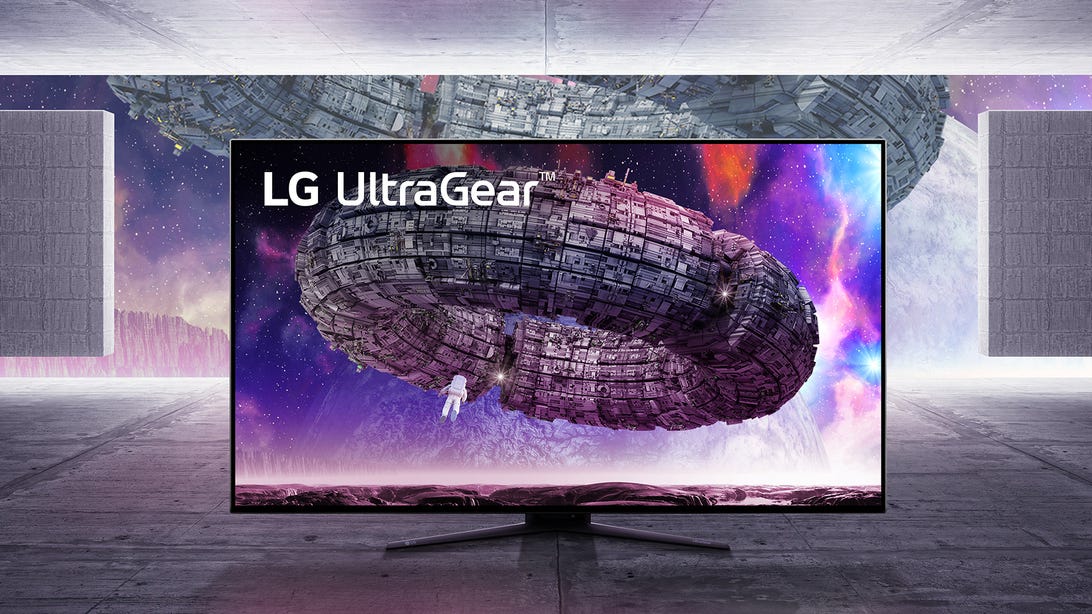LG’s new trio of UltraGear gaming monitors include the company’s first OLED model, the 48GQ900, and two 32-inch models, 32GQ950 and 32GQ850, which help inaugurate the VESA AdaptiveSync certification program. The latter is a new effort by the electronics’ industry organization to provide a logo for buyers to clarify manufacturer claims about variable refresh rate performance; it displays the maximum frame rate the monitor can hit with adaptive sync in default settings for the native resolution.
The monitors are shipping first in Japan, this month. Availability in the US, UK and Australia, as well as pricing, remain a mystery. They all support HDMI 2.1 with variable refresh, which you need for 4K/120fps console support. They’ve been redesigned with a more angular aesthetic, include a headphone jack with DTS Headphone:X support for surround and have gray-to-gray pixel response of 1ms or better.


Given that LG makes some of the best OLED TVs, and that the company has gone all-in on gaming features like auto low-latency mode for its TVs, it’s surprising that it’s taken this long for LG to introduce its own gaming monitor. LG panels have been used in other gaming monitors — notably, the 55-inch Alienware AW55 — and last year LG brought us a pricey content-creation-oriented 32-inch OLED, but this is its first UltraGear model in the OLED family.


But it’s unsurprising that the monitor is big at 48 inches and comes with a remote, since it’s probably based on a TV. And possibly too big: Since it’s flat rather than curved, it can be a bit unwieldy for a desktop (a curved screen usually doesn’t extend as far to the sides). The monitor only supports HDR10, the basic ability to mathematically transform an incoming signal to the proper tonal range for HDR, at least in the monitor sphere.
Specifications
| LG UltraGear 48GQ900 | LG UltraGear 32GQ950 | LG UltraGear 32GQ850 | |
|---|---|---|---|
| Display Type | OLED | IPS | IPS |
| Screen size | 47.5-inch | 31.5-inch | 31.5-inch |
| Resolution | 4K UHD (3,840 x 2,160) | 4K UHD (3,840 x 2,160) | QHD (2,560 x 1,440) |
| Color Gamut | 98.5% P3 | 98% P3 | 98% P3 |
| Refresh Rate | 120Hz / 138Hz overclock | 144Hz / 160Hz overclock | 240Hz / 260Hz overclock |
| HDR | Basic | VESA DisplayHDR 1000 | VESA DisplayHDR 600 |
| Adaptive Sync | AMD FreeSync Premium, G-Sync Compatible | AMD FreeSync Premium Pro, G-Sync Compatible | AMD FreeSync Premium Pro, G-Sync Compatible, VESA Adaptive Sync |
| Connectors | 3 x HDMI 2.1 (VRR), 1 x DisplayPort, 2 x USB-A, headphone with DTS Headphone:X support | 2 x HDMI 2.1 (VRR), 1 x DisplayPort, 2 x USB-A, headphone with DTS Headphone:X support | 2 x HDMI 2.1 (VRR), 1 x DisplayPort, 2 x USB-A, headphone with DTS Headphone:X support |
| Speaker | 2 x 20-watt | None | None |
| Stand | Fixed | Pivot, tilt, height | Pivot, tilt, height |
The 32-inch models do support HDR; one’s a 4K, 144Hz model with a 1,000-nit peak brightness, while the other supplies a 240Hz refresh rate in 1440p, hitting 600 nits of peak brightness. They both use LG’s Nano IPS panels.
The two monitors are the newest models to receive AdaptiveSync certification, but a handful of LG’s older monitors have also been retroactively certified as well. There’s also a new MediaSync Display logo certification, which is a pass/fail mark for display jitter in general playback.


